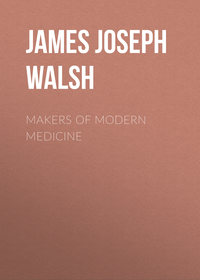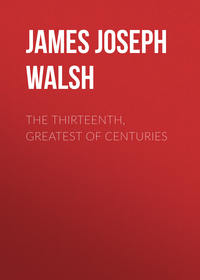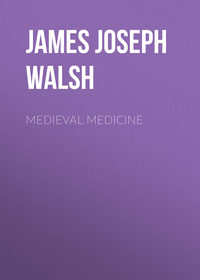 полная версия
полная версияEducation: How Old The New
With this surprising resurrection of our school-teaching methods from the past it is interesting to study other phases of the education of these early times, and at the same time to note the accomplishments of the men, of the period, their tastes, the state of their culture as regards the arts and crafts and personal adornment and the decoration of their houses and buildings of various kinds. Flinders Petrie, the distinguished English Egyptologist, in an article on "The Romance of Early Civilization," printed recently in The Independent (New York), said:
"We have now before us a view of the powers of man at the earliest point to which we can trace written history, and what strikes us most is how very little his nature or abilities have changed in seven thousand years; what he admired we admire; what were his limits in fine handiwork are also ours. We may have a wider outlook, a greater understanding of things, our interests may have extended in this interval; but as far as human nature and tastes go, man is essentially unchanged in this interval."
We have enough of the products of the arts and crafts of these early Egyptian generations to show us that there must have been no inconsiderable training of the men of this time in the making of beautiful art objects. For instance, the interior decoration of their tombs shows us men skilled as designers, clever in the use of colors, with a rather extensive knowledge of pigments and with a definite tendency not to repeat designs but to create new ones. Most of the diapered designs of modern interior decorations were original with the Egyptians, and some of those found in the tombs uncovered in recent years have been adopted and adapted by modern designers. It is in the matter of jewelry particularly that the ability and the training of the old Egyptian workmen are most evident. It would be quite incredible to think that these workmen developed their artistic craftsmanship without training, and therefore there was at least the germ of a technical school or set of schools in oldest Egypt. It would be quite impossible to believe this only that we know so much more about other features of Egyptian education as anticipations of our own. A special word about their jewelry then, because it illustrates a definite training quite different from that of our time, will not be out of place.
Their jewelry, it may be said at once, is in striking contrast with what we call jewelry in our time. It is true that we are in the midst of one of the worst periods of jewelry-making, but then we are so prone to think of anything very modern as representing the highest evolution, that the contrast is chastening and illuminating. Mr. Petrie has insisted on the beautiful jewelry, carved precious stones and gold ornaments of the very early period in Egypt. In our time we have no jewelry that deserves the name. I doubt whether we even know the real definition of jewelry, so I venture to repeat it. Jewels are precious stones themselves of value, usually of a high degree of hardness so that they do not deteriorate with time or wear, to which a greatly enhanced value is added by the handiwork of man. Jewels are made by artistic carving and cutting so that besides their precious quality as beautiful colored stones, they have an added charm and interest from human workmanship. We wear no such jewelry in our generation. What we have are merely precious stones. These by an artificial rigging of the market and a combination of the great commercial agencies that control the sale of diamonds and other precious stones, remain very expensive in spite of their comparative abundance. They are worn only because they are a display of the amount of money that a person can afford to spend for mere ornaments.
There is nothing in these precious stones themselves that carries an appeal to the educated mind. It is true that they are pretty, but only with the prettiness of the play of rainbow colors that delights a childish or uncultured eye. It requires no taste to like them, no culture to appreciate them, and their cost alone gives them value. This is so true that those who possess a magnificent parure of diamonds often also have an imitation of them in cheaper stones that may be worn on most occasions. The danger of loss or the risk of robbery is so great that it has seemed worth while to have this imitation made in many cases. No one except an expert will recognize the difference, and if you are known to possess the real stones it will of course be supposed that you are wearing them. What gives them value as an adornment in the eye of the possessor, and presumably also of the onlookers, is the fact that they must have cost such a large sum of money. They are a vulgar display of wealth. They are typically barbaric and, worn in the profusion now so common, carry us back to the uncultured peoples who like to wear gaudy things. The taste is perhaps a little better, but the essential quality of mind that dictates the wearing of heavy brass rings and strings of beads and that which impels to the display of many diamonds, is hard to differentiate.
Artistic objects produce a sense of pleasure in the beholder, an appreciation of the beautiful handiwork of man. Precious stones worn as is now the custom produce only a sense of envy. Of course envy comes only to baser minds, but it is perfectly clear that most of those who are supposed to be affected by the sight of diamonds worn in profusion have this particular quality rather well developed. This distinction is often forgotten. Personal adornment as well as the adornment of one's house should be in order to give pleasure to others, and not merely a display of wealth for wealth's sake in such a way as is likely to produce envy. The old Egyptians made their jewelry with the true artistic sense. Flinders Petrie has told how beautifully they carved hard gems of various kinds and how the remains of these show us a people of good taste, even though their technique in the manufacture of such objects may have left something to be desired. In connection with this oldest of books it is important to recall this, for it shows that not alone in the applied wisdom of life and the knowledge gained from personal experience were these Egyptians of over 5,000 years ago brothers and sisters beyond whose wise saws we have not advanced, but also in the realm of art their work takes its place beside what is best in the modern time.
Some may be inclined to say that while the Egyptians may, as indeed we must admit they did, know many things about art and literature and practical wisdom, yet they did not have exact knowledge. Their knowledge, though large and liberal, had not become scientific. This will scarcely be maintained, however, by any one who realizes how much of applied science there was in the building of the old temples and pyramids and how much they must have developed mechanics, applied and theoretic, in order to accomplish the tasks they thus set themselves. Cantor, the German historian of mathematics, acknowledged this and paid a worthy tribute to the old Egyptians' development of mathematics, pure and applied, in discussing the expression that had been used by Democritus, the early Greek geometer, who once declared that "In the construction of plane figures with demonstrations no one has yet surpassed me, not even the rope fasteners (harpedonaptai) of Egypt." For a long time this word harpedonaptai was a mystery, but Professor Cantor cleared it up, and explaining for us the exact meaning of the compound which means literally either rope fasteners or rope stretchers, he says, "There is no doubt that the Egyptians were very careful about the exact orientations of their temples and other public buildings. Old inscriptions seem to show that only the North and South lines were drawn by actual observation of the stars. The East and West lines were drawn at right angles to the others. Now it appears from the practice of Heron of Alexandria and of the ancient Indian and probably also the Chinese geometers, that a common method of securing a right angle between two very long lines was to stretch round three pegs a rope measured in three portions which were to one another in the ratio 3:4:5. The triangle thus formed is right-angled. Further the operation of rope stretching is mentioned in Egypt, without explanation, at an extremely early time (Amenemhat I). If this be the correct explanation of it, then the Egyptians were acquainted 2,000 years B.C., with a particular case of the proposition now known as the Pythagorean theorem."
This may not seem to mean very much. Yet what it illustrates is just this. These men wanted a certain development of mathematics. They needed it for the work that they were engaged at. They set themselves to the solution of certain problems and in doing so evolved a theorem in pure mathematics and an application of it which greatly simplified construction and gave an impetus to mechanics. In so doing they anticipated the work of a long after time. This is what I would insist is always true with regard to man. When he needs some intellectual development he makes it. When he requires an application of it he succeeds in working it out. Later ages may go farther, but had he needed further developments he evidently had the power to make them and probably would have made them.
The old Greeks had a much better opportunity to study Egyptian remains than we have, and especially was this true after the foundation of Alexandria. There must have been a lively interest in things Egyptian aroused in the Greek minds by this Greek settlement in old Egypt. It is not surprising, then, to find some magnificent compliments to the old Egyptians in the mouths of some of the writers about the time of the foundation of Alexandria. Eudemus, for instance, the pupil of Aristotle, wrote the history of Geometry in which he traces its invention to the Egyptians, and states that the reason for its invention was its necessity in the remeasurement of land demanded after the removal of landmarks by the annual rise of the Nile. Always does one find this, that when there is a serious demand for an invention in theory or practice men make it. It is not a change or development in man that brings about inventions, but a change in his environment which causes new necessities to arise, and then he proceeds with an ability always the same to respond properly to those necessities.
Eudemus says: "Geometry is said by many to have been invented among the Egyptians, its origin being due to the measurement of plots of land. This was necessary there because of the rising of the Nile, which obliterated the boundaries appertaining to separate owners. Nor is it marvellous that the discovery of this and other sciences should have arisen from such an occasion, since everything which moves in development will advance from the imperfect to the perfect. From mere sense-perception to calculation, and from this to reasoning, is a natural transition."
The old Egyptians made some fine developments of arithmetic. These were afterwards lost and were reinvented probably several times. I have already quoted from Cantor the opinion that the Egyptians were familiar with the properties of the right triangle whose sides were in the ratio 3:4:5 over 4,000 years ago. In the Papyrus of Ahmes, whose contents probably come from before 2400 B.C., there are the solutions of many problems which show how far the Egyptians had gone in arithmetical calculations. For instance, there are methods of calculating the solid contents of barns. The solutions are not absolute but are very closely approximate. Ahmes has problems that were solved in connection with the pyramids, which make it very clear that the old Egyptians had more than a little knowledge of the principles of proportion, of certain geometrical figures and probably were familiar also with the simpler phases at least of trigonometry. The area of a circle is found in Ahmes by deducting from the diameter one-ninth and squaring the remainder, which gives a value for the ratio of the circumference to the diameter of a circle much more nearly correct than that used by most writers until comparatively recent times.
As a teacher of the history of medicine with certain administrative functions in a medical school, I have been very much interested in the old-time medicine and above all the details of medical education that we find among the Egyptians. Ordinarily it would be assumed that there was so little of anything like medical education that it could be scarcely worth while talking about it. On the contrary, we find so much that is being constantly added to by discoverers, that it is a never-ending source of surprise. There is a well-grounded tradition founded on inscriptions that Athothis, the son of Menes, one of the early kings, wrote a work on anatomy. This king is said to have died about 4150 B.C. There are traces of the existence of hospitals at that time in which diseases were studied and medical attendants trained. Even earlier than this there was a great physician, the first physician of whom we have record in history, whose name was I-Em-Hetep, which means "the Bringer of Peace." He had two other titles, one of which was "the Master of Secrets," partly because he possessed the secrets of health and disease, very probably also because so many things had to be confided to him as a physician. Another of his titles was that of "The Scribe of Numbers," in reference, doubtless, to the fact that he had to use numbers so carefully in making out his prescriptions.
His first title, that of the bringer of peace, shows that very early in the history of medicine it was recognized that the physician's first duty was to bring peace of mind to his patients. A distinguished French physician (Director) of the department of physiology of the University of Paris, Professor Richet, said not long since, that physicians can seldom cure, they can often relieve, but they can always console, and evidently this oldest physician took his duty of consolation seriously and successfully. He lived in the reign of King Tehser, a monarch of the Third Dynasty in Egypt, who reigned about 4500 B.C. or a little later. How much this first physician was thought of will be best appreciated from the fact that the well-known step pyramid at Sakkara, the old cemetery near Memphis, is called by his name. So great indeed was the honor paid to him that after his death he was worshipped as a god, and so we have statues of him seated with a scroll on his knees, with an air of benignant knowledge, a placid-looking man with a certain divine expression of sympathy well suited to his name, the bringer of peace. While they raised him to their altars he does not wear a beard as did all their gods and their kings when they were raised to the godly dignity, but evidently they felt that his humanity was of supreme interest to them.
There is another monument at Sakkara that is of special interest to us in its consideration of old-time medicine. I discussed it and its inscriptions in the Journal of the American Medical Association (Nov. 8, 1907). It is the tomb of a surgeon, decorated within with pictures of surgical operations. The grandeur of the tomb and its location show us that the surgeon must have held a very prominent place in the community of that time. The date of this tomb is not later than 2500 B.C. Certain of the surgical operations resembled those done at the present time. There is the opening of a carbuncle at the back of the neck which shows how old are men's diseases and the modes of their treatment. After this the oldest monument in the history of medicine is documentary, the Ebers Papyrus, the writing of which is probably not much later than 1700 B.C. This consists, moreover, of a collection of older texts and suggestions in medicine, and some of the idioms are said to belong to several distant periods. It is probable that certain portions of this papyrus were composed not much later than the oldest book in the world, and that they date from nearly 3000 B.C. This papyrus is as interesting and as startling in its anticipation of some of our modern medical wisdom as is the Instruction of Ptah Hotep in the practical wisdom of life. This seems a good deal to say, but there is ample evidence for it.
According to Dr. Carl von Klein, who discussed the "Medical Features of the Ebers Papyrus" in some detail in the Journal of the American Medical Association about five years ago, over 700 different substances are mentioned as of remedial value in this old-time medical work. There is scarcely a disease of any important organ with which we are familiar in the modern time that is not mentioned here. While the significance of diseases of such organs as the spleen, the ductless glands, and the appendix was of course missed, nearly every other pathological condition was either expressly named or at least hinted at. The papyrus insists very much on the value of history-taking in medicine, and hints that the reason why physicians fail to cure is often because they have not studied their cases sufficiently. While the treatment was mainly symptomatic, it was not more so than is a great deal of therapeutics at the present time, even in the regular school of medicine. The number and variety of their remedies and of their modes of administering them is so marvellous, that I prefer to quote Dr. von Klein's enumeration of them for you:
"In this papyrus are mentioned over 700 different substances from the animal, vegetable and mineral kingdoms which act as stimulants, sedatives, motor excitants, motor depressants, narcotics, hypnotics, analgesics, anodynes, antispasmodics, mydriatics, myotics, expectorants, tonics, dentifrices, sialogogues, antisialics, refrigerants, emetics, antiemetics, carminatives, cathartics, purgatives, astringents, cholagogues, anthelmintics, restoratives, haematics, alteratives, antipyretics, antiphlogistics, antiperiodics, diuretics, diluents, diaphoretics, sudorifics, anhydrotics, emmenagogues, oxytocics, ecbolics, galactagogues, irritants, escharotics, caustics, styptics, haemostatics, emollients, demulcents, protectives, antizymotics, disinfectants, deodorants, parasiticides, antidotes and antagonists."
Scarcely less interesting than the variety of remedies were their methods of administration:
"Medicines are directed to be administered internally in the form of decoctions, infusions, injections, pills, tablets, troches, capsules, powders, potions and inhalations; and externally, as lotions, ointments, plasters, etc. They are to be eaten, drunk, masticated or swallowed, to be taken often once only–often for many days–and the time is occasionally designated–to be taken mornings, evenings or at bedtime. Formulas to disguise bad tasting medicaments are also given." We have no advantages over the early Egyptians even in elegant prescribing.
The traditions with regard to Egyptian medicine which came to the Greeks seemed so incredible as we found them in the older historians that they used to be joked about. Herodotus came in for a good deal of this scoffing. He was said to be entirely too credulous and prone to exaggerate in order to add interest to his history, but every advance in our knowledge in modern time has confirmed what Herodotus has to say. In the eighteenth century Voltaire said of him, "The Father of history, nay, rather the Father of lies." That was Voltaire's way. Anything that was above him he scoffed at. Homer was a wandering minstrel such as you might find in the streets of Paris, Dante was a mediaeval barbarian, our own Shakespeare was a dramatic butcher, producing his effects by bloodshed and cruelty upon the stage. The nineteenth century has reversed Voltaire in every point of this, though some still listen to him in other matters. Above all, Herodotus has been amply justified by modern investigations. Herodotus tells us of the tradition of the number of different kinds of medical specialists in existence among the Egyptians. We are very prone to think that specialism is a development of modern medicine. What we know of Egypt shows us how old it is and makes it very clear that there must have been specialized modes of medical education for these many doctors who treated only very limited portions of the body and no other.
Herodotus tells us, to quote for you the quaint English of one of the old translations:
"Physicke is so studied and practised with the Egyptians that every disease hath his several physician, who striveth to excell in healing that one disease and not to be expert in curing many. Whereof it cometh that every corner of that country is full of physicians. Some for the eyes, others for the head, many for the teeth, not a few for the stomach and the inwards."
The Ebers Papyrus shows us that the specialties were by no means scantily developed. We have traditions of operations upon the nose, of remedies for the eyes there are many and the diagnosis and treatment of eye diseases are rather well developed. The filling of teeth seems even to have been practised,5 and while the traditions in this matter are a little dubious, the evidence has been accepted by some good authorities. This specialism in Egyptian medicine probably existed long before Herodotus, for he seems to speak of it as a very old-time institution in his time, and indeed Egypt had degenerated so much that it would be hard to believe that there was any such development there in his time. In the old temples they seem to have used many modes of treatment that we are likely to think of as very modern. Music for instance was used to soothe the worried, amusements of various kinds were employed to influence the disturbed mind favorably. In many ways some of the old temples resembled our modern health resorts. To them many patients flocked and were treated and talked about their ailments and went back each year for "the cure" once more, all the while being more benefited, as is true also in our own time, by the regularity of life, the regulation of diet and the mental influence of the place, than by any of the drugs or even the curative waters.
In a word, our study of old Egypt and Egyptian education shows us men doing things just about the way that our generation does them and succeeding just about as well as we succeed. They taught writing, spelling and composition as we do and the moral content of their teaching is admirable. They had training schools for the arts and crafts, their taste is better than ours in many things, above all, they trained workmen very well, and the remains of their achievements are still the subject of our admiration. They solved mechanical problems in the building of the pyramids quite as well as we do. They made enough experiments that we would call chemical, to find enduring pigments for decorative purposes and they succeeded in making tools that enabled them to carve stonework beautifully. Even their professional education was not very different from our own and its results, particularly in the line of specialism, are startling anticipations of the most modern phase of medicine. They anticipated our interests in psychotherapy and some of them were mental healers, and more of them used the influence of the mind on the body than our physicians have been accustomed to until very recent years. Their physicians and surgeons were held in the highest veneration, and what we know of them shows that the judgment of the old Egyptians in this matter was very good and better than the average appreciation of physicians at the present time.
After all is said no one with any pretence to knowledge of the past would claim for a moment that we were doing better work in anything than men have done at many times in the history of culture. Our idea of progress is just one of these vague bits of self-sufficiency that each generation has had in its own time and that has made it feel that somehow what it is accomplishing means much in the world's history. It is rather amusing to compare the estimate that any generation has of itself with the appreciation of it by succeeding generations. Especially is this true for generations separated by 100 years or more. Generations are only made up of men and women, and what man or woman is there who has not thought many times during life that though his or her work might not be estimated very highly by those close to it, this was due but to a sad lack of proper appreciation, since it represented certain qualities that well deserved admiration? We are all gifted with this precious self-conceit, which is not so bad a thing, after all, since it makes us work better than if we had a proper but much less exalted appreciation of our real worth. It is much easier to encourage people to do things than to scold or criticise them into doing them. We shall not quarrel with our generation, then, for being self-conceited,–it is made up of human beings,–but we shall try and not let a due appreciation of our accomplishment be smothered entirely, by this self-conceit.











